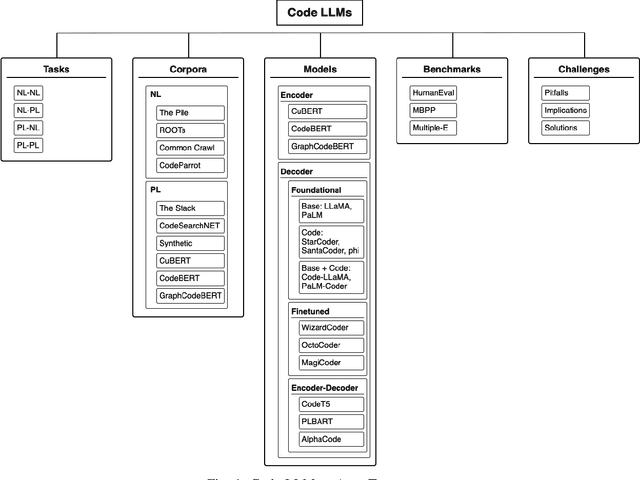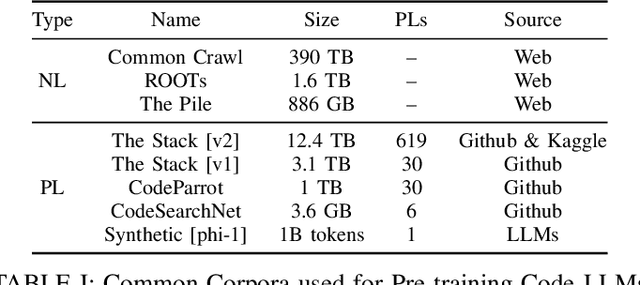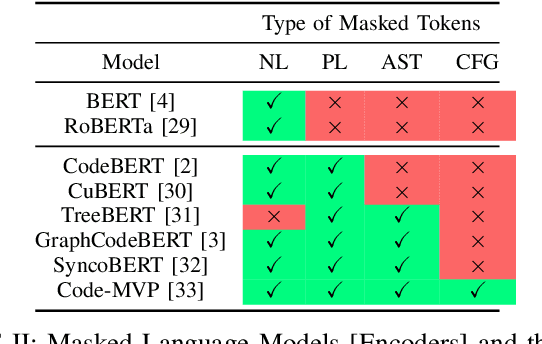Christian Newman
Code LLMs: A Taxonomy-based Survey
Dec 11, 2024



Abstract:Large language models (LLMs) have demonstrated remarkable capabilities across various NLP tasks and have recently expanded their impact to coding tasks, bridging the gap between natural languages (NL) and programming languages (PL). This taxonomy-based survey provides a comprehensive analysis of LLMs in the NL-PL domain, investigating how these models are utilized in coding tasks and examining their methodologies, architectures, and training processes. We propose a taxonomy-based framework that categorizes relevant concepts, providing a unified classification system to facilitate a deeper understanding of this rapidly evolving field. This survey offers insights into the current state and future directions of LLMs in coding tasks, including their applications and limitations.
CSEPrompts: A Benchmark of Introductory Computer Science Prompts
Apr 04, 2024



Abstract:Recent advances in AI, machine learning, and NLP have led to the development of a new generation of Large Language Models (LLMs) that are trained on massive amounts of data and often have trillions of parameters. Commercial applications (e.g., ChatGPT) have made this technology available to the general public, thus making it possible to use LLMs to produce high-quality texts for academic and professional purposes. Schools and universities are aware of the increasing use of AI-generated content by students and they have been researching the impact of this new technology and its potential misuse. Educational programs in Computer Science (CS) and related fields are particularly affected because LLMs are also capable of generating programming code in various programming languages. To help understand the potential impact of publicly available LLMs in CS education, we introduce CSEPrompts, a framework with hundreds of programming exercise prompts and multiple-choice questions retrieved from introductory CS and programming courses. We also provide experimental results on CSEPrompts to evaluate the performance of several LLMs with respect to generating Python code and answering basic computer science and programming questions.
How We Refactor and How We Document it? On the Use of Supervised Machine Learning Algorithms to Classify Refactoring Documentation
Oct 26, 2020



Abstract:Refactoring is the art of improving the design of a system without altering its external behavior. Refactoring has become a well established and disciplined software engineering practice that has attracted a significant amount of research presuming that refactoring is primarily motivated by the need to improve system structures. However, recent studies have shown that developers may incorporate refactorings in other development activities that go beyond improving the design. Unfortunately, these studies are limited to developer interviews and a reduced set of projects. To cope with the above-mentioned limitations, we aim to better understand what motivates developers to apply refactoring by mining and classifying a large set of 111,884 commits containing refactorings, extracted from 800 Java projects. We trained a multi-class classifier to categorize these commits into 3 categories, namely, Internal QA, External QA, and Code Smell Resolution, along with the traditional BugFix and Functional categories. This classification challenges the original definition of refactoring, being exclusive to improving the design and fixing code smells. Further, to better understand our classification results, we analyzed commit messages to extract textual patterns that developers regularly use to describe their refactorings. The results show that (1) fixing code smells is not the main driver for developers to refactoring their codebases. Refactoring is solicited for a wide variety of reasons, going beyond its traditional definition; (2) the distribution of refactorings differs between production and test files; (3) developers use several patterns to purposefully target refactoring; (4) the textual patterns, extracted from commit messages, provide better coverage for how developers document their refactorings.
 Add to Chrome
Add to Chrome Add to Firefox
Add to Firefox Add to Edge
Add to Edge